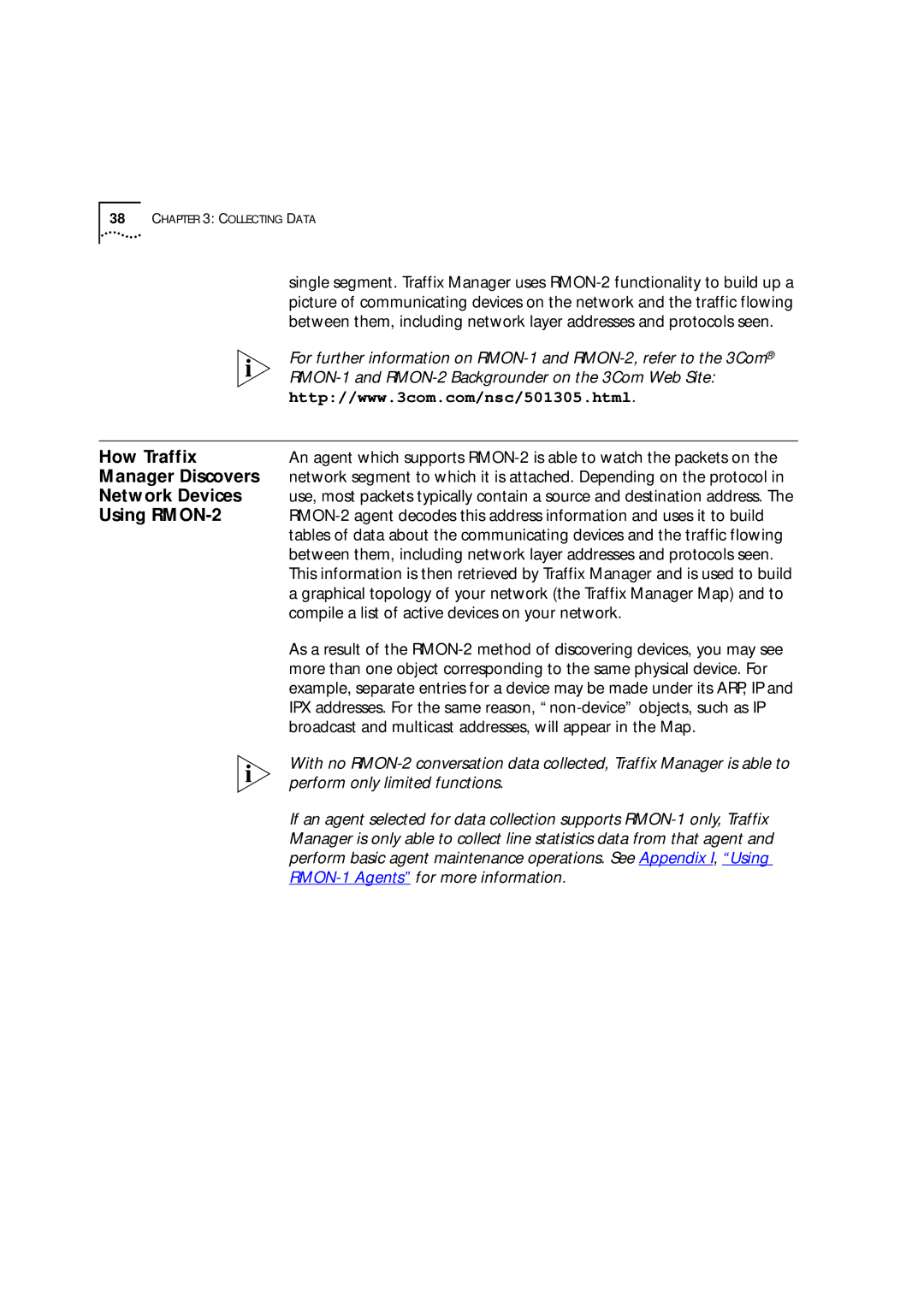
38CHAPTER 3: COLLECTING DATA
| single segment. Traffix Manager uses |
| picture of communicating devices on the network and the traffic flowing |
| between them, including network layer addresses and protocols seen. |
| For further information on |
| |
| http://www.3com.com/nsc/501305.html. |
|
|
How Traffix | An agent which supports |
Manager Discovers | network segment to which it is attached. Depending on the protocol in |
Network Devices | use, most packets typically contain a source and destination address. The |
Using | |
| tables of data about the communicating devices and the traffic flowing |
| between them, including network layer addresses and protocols seen. |
| This information is then retrieved by Traffix Manager and is used to build |
| a graphical topology of your network (the Traffix Manager Map) and to |
| compile a list of active devices on your network. |
| As a result of the |
| more than one object corresponding to the same physical device. For |
| example, separate entries for a device may be made under its ARP, IP and |
| IPX addresses. For the same reason, |
| broadcast and multicast addresses, will appear in the Map. |
| With no |
| perform only limited functions. |
| If an agent selected for data collection supports |
| Manager is only able to collect line statistics data from that agent and |
| perform basic agent maintenance operations. See Appendix I, “Using |
|
